
Please, support PV!
It allows to keep PV going, with more focus towards AI, but keeping be one of the few truly independent places.
It allows to keep PV going, with more focus towards AI, but keeping be one of the few truly independent places.
AVCHD maximum image quality settings and testing
-
@Stray
66M AQ4 is stable on my camera so far (in 24H mode). I do have the feeling that IQ is somewhat better compared to 44M with fast motion and high shutter speeds... but if so, it's negligible, that's probably right.
The problem is you can't do real side by side comparisions... as long as you can't control the motion in the scene :-)
However I have not done a lot of tests with the 66M settings by now ... as I am actually really happy with Chris' 44M setting. 44M is plenty (IMO), the camera is stable, in-camer playback is fine, files do span at 24L... and finally 50i in the 44M setting looks better than 50i in the 66M setting. So actually I am not yet sure whether or not I will use the 66M at all ... I will however use a 24H GOP3 setting for its motion look. But here again I haven't had the time to look deeper into the GOP3 settings ... other than some preliminary tests. -
Yeah, I agree the 44M settings are really good. I can't stop using the 66M AQ2 settings, but I can't give any decent reason as to why I don't just fall back to the 44M (apart from that one shot I took in a bar in lowlight; you know how it is, theres always that one shot) which are equally as good and have all the benefits you mentioned. In theory the 66M should render motion better, but yeah, how easily do you judge that empirically (I should try and get hold of a metronome). So I'm being irrational, my head says the 44M AQ4 and my gut says 66M AQ2. I think I'll end up with two settings in the end, I'll use the 44M most of the time, and switch to a 66M GOP 6 (if I can get it stable) occasionally.
-
I too feel we're glossing over a bit the dramatic difference in Ralph's tests re movement. That should be the baseline for now right? I mean, that's the only 'real world' A/B comparison we've got. Here's where I'm confused: it seems clear the 66 AQ4 doesn't perform close to the HDMI Ralph capture with movement, and so the move to AQ2; but is AQ 2 giving a considerably lower performance on static shots? Ralph, are you planning more tests? Did you, at the end of your testing, have a strong feeling about the 'correct' setting in cam for general use, for a happy medium?
-
Thanks cosimo_bullo.
This was my exact point from my last message above.
Ralph_B appears to be the only GH2 user (that I know of) to perform direct frame comparisons using HDMI out. Thanks Ralph!
If there are others (that can capture HDMI) out there that can perform these comparisons, this will allow a great tool to determine best settings.
Static shots are looking good. I'm sure we can find the combination to have motion not smear so badly.
Again Ralph_B's motion example 66Mb/s AQ4 clearly shows this issue. His 66Mb/s AQ2 motion example does show some improvement, although there's room for improvement here too. -
@cosimo_bullo and proaudio4
I did those tests with a completely open mind, to find out for myself what was going on with the various settings. The results were pretty dramatic. The 66M AQ4 completely falls apart with motion. But then, that shouldn't be surprising. As the note says, with AQ4 all the additional bandwidth goes to detail; the implication being that motion is the same as the stock setting. Although I did not do a stock setting test, it certainly looks like that's the case.
On the other hand, 66M AQ2 shows solid improvement for both static and motion, and comes reasonably close to the HDMI for both. So, I've happily settled on that for now. It also works fine on all the variable movie modes.
If anybody comes up with a setting that they feel is superior to Chris's 66M AQ2 for BOTH static and motion, I will be happy to run an HDMI comparison test. And I agree, using the HDMI picture as a reference is the ultimate acid test. It cuts through all the muck and shows what's really going on. -
@Ralph_B
Your assumption is correct - with AQ4 all (or, at least nearly all) additional bandwidth goes to detail. Have you tested the 44M AQ4 settings? In my tests it's motion behavior was better than I expected. I'd be curious about what you find.
Chris -
Ralph did test the 66M cbrandin setting at AQ4 and as he says, it falls apart with motion, so I'd imagine 44M would be similar but worse. But I suppose it's worth trying too. Ralph I just went back to look and it appears you didn't test an 88 AQ2 setting. Do you think that's worth a shot re motion? Seems like it might be the sweet spot. I for one have no concern about using the extra bandwidth... really just want this thing redlining as max quality.
-
I've redone yesterdays comparison for IQ at static shots, panning and for grading stability, now with following settings:
cBrandin's (GOP12): 44M - AQ4
66M - AQ2
driftwood's (GOP3): 100M - AQ1
110M - AQ3
132M - AQ2 and AQ3
I did 2 runs for each, ISO 160 and ISO 1600. This time I kept shutter at 1/50 for all shots.
Nokton 25mm @ f8, ND, Transcent class 10 card
I will split it up in several posts to keep it clear.
For streamparser screenshots: left side on the timeline is static shot, right side panning starts
First post is for static shots at ISO 160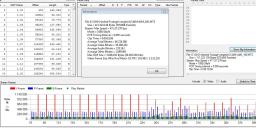
 44M_160.JPG1267 x 577 - 153K
44M_160.JPG1267 x 577 - 153K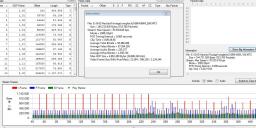
 66M_160.JPG1268 x 585 - 160K
66M_160.JPG1268 x 585 - 160K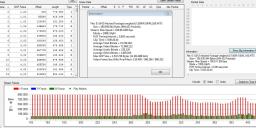
 100M_160.JPG1266 x 588 - 166K
100M_160.JPG1266 x 588 - 166K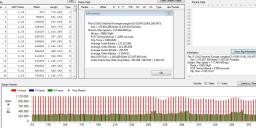
 110M_160.JPG1260 x 577 - 166K
110M_160.JPG1260 x 577 - 166K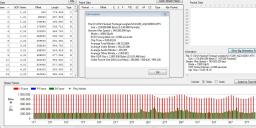
 132M_AQ2_160.JPG1267 x 591 - 169K
132M_AQ2_160.JPG1267 x 591 - 169K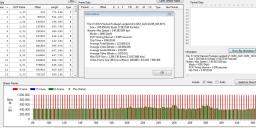
 132M_AQ3_160.JPG1262 x 587 - 170K
132M_AQ3_160.JPG1262 x 587 - 170K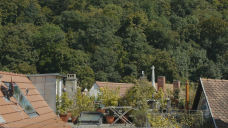
 44M_160_static.png1920 x 1080 - 4M
44M_160_static.png1920 x 1080 - 4M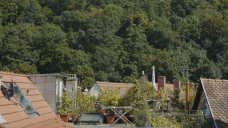
 66M_160_static.png1920 x 1080 - 4M
66M_160_static.png1920 x 1080 - 4M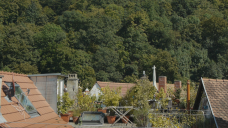
 100M_160_static.png1920 x 1080 - 4M
100M_160_static.png1920 x 1080 - 4M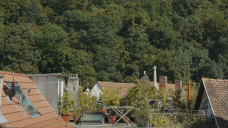
 110M_160_static.png1920 x 1080 - 4M
110M_160_static.png1920 x 1080 - 4M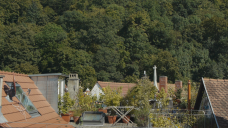
 132M_AQ2_160_static.png1920 x 1080 - 4M
132M_AQ2_160_static.png1920 x 1080 - 4M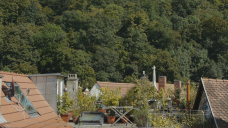
 132M_AQ3_160_static.png1920 x 1080 - 4M
132M_AQ3_160_static.png1920 x 1080 - 4M -
OK guys, I'll test 44M AQ4 today. I'll also try an 88M AQ2, but shouldn't the buffers and other settings be readjusted to handle the larger data flow?
-
Static shots at ISO 1600
I-frame issues with 110M after few seconds.
132M AQ3 failed everytime after some seconds.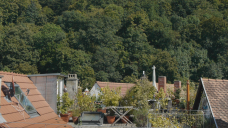
 44M_1600_static.png1920 x 1080 - 4M
44M_1600_static.png1920 x 1080 - 4M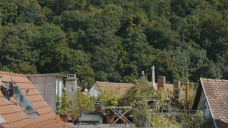
 66M_1600_static.png1920 x 1080 - 4M
66M_1600_static.png1920 x 1080 - 4M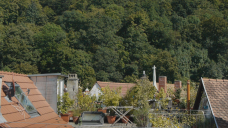
 100M_1600_static.png1920 x 1080 - 4M
100M_1600_static.png1920 x 1080 - 4M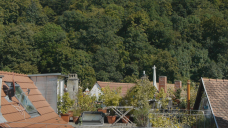
 110M_1600_static.png1920 x 1080 - 4M
110M_1600_static.png1920 x 1080 - 4M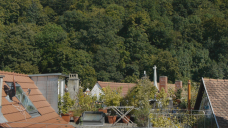
 132M_AQ2_1600_static.png1920 x 1080 - 4M
132M_AQ2_1600_static.png1920 x 1080 - 4M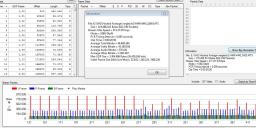
 44M_1600.JPG1265 x 585 - 151K
44M_1600.JPG1265 x 585 - 151K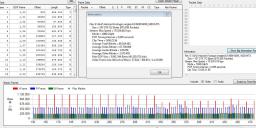
 66M_1600.JPG1267 x 592 - 160K
66M_1600.JPG1267 x 592 - 160K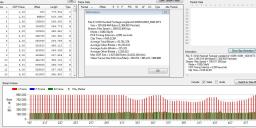
 100M_1600.JPG1265 x 586 - 168K
100M_1600.JPG1265 x 586 - 168K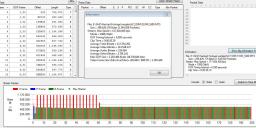
 110M_1600.JPG1263 x 589 - 162K
110M_1600.JPG1263 x 589 - 162K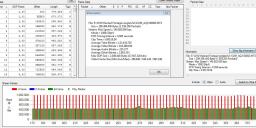
 132M_AQ2_1600.JPG1262 x 584 - 167K
132M_AQ2_1600.JPG1262 x 584 - 167K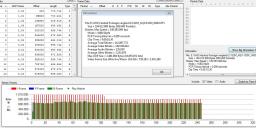
 132M_AQ3_1600_writingSpeedError.JPG1266 x 583 - 162K
132M_AQ3_1600_writingSpeedError.JPG1266 x 583 - 162K -
Panning at ISO 160
Now I don't know how much sense comparing these framegrabs makes, panning speed obvisouly varied and shutter was 1/50 like I said, so I won't post ISO 1600 framegrabs unless someone is interrested.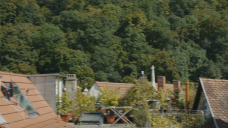
 44M_160_PAN.png1920 x 1080 - 2M
44M_160_PAN.png1920 x 1080 - 2M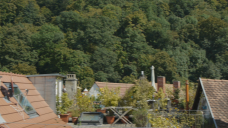
 66M_160_PAN.png1920 x 1080 - 3M
66M_160_PAN.png1920 x 1080 - 3M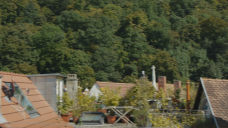
 100M_160_PAN.png1920 x 1080 - 2M
100M_160_PAN.png1920 x 1080 - 2M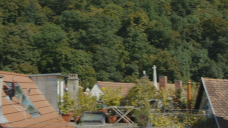
 110M_160_PAN.png1920 x 1080 - 2M
110M_160_PAN.png1920 x 1080 - 2M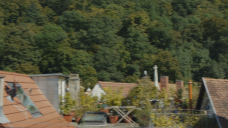
 132M_AQ2_160_PAN.png1920 x 1080 - 2M
132M_AQ2_160_PAN.png1920 x 1080 - 2M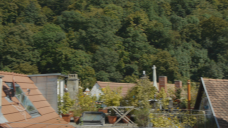
 132M_AQ3_160_PAN.png1920 x 1080 - 2M
132M_AQ3_160_PAN.png1920 x 1080 - 2M -
Grading stability at ISO 160
Transcoded to AVID DNxHD 175 4:2:2 and beaten up in After Effects. To my eyes, there's not even a difference between 44M and 132M, it seems that higher bitrates won't provide further stability for post production.
EDIT: only look for the amount and size of artifacts, not color differences (sun was moving)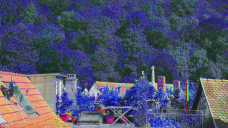
 44M_160_GRADE.png1920 x 1080 - 4M
44M_160_GRADE.png1920 x 1080 - 4M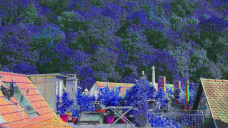
 66M_160_GRADE.png1920 x 1080 - 4M
66M_160_GRADE.png1920 x 1080 - 4M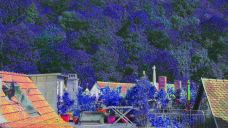
 100M_160_GRADE.png1920 x 1080 - 4M
100M_160_GRADE.png1920 x 1080 - 4M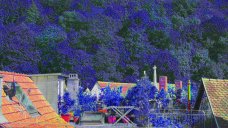
 110M_160_GRADE.png1920 x 1080 - 4M
110M_160_GRADE.png1920 x 1080 - 4M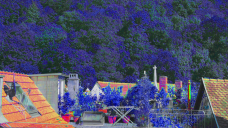
 132M_AQ2_160_GRADE.png1920 x 1080 - 4M
132M_AQ2_160_GRADE.png1920 x 1080 - 4M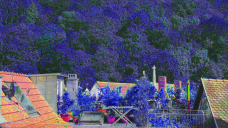
 132M_AQ3_160_GRADE.png1920 x 1080 - 4M
132M_AQ3_160_GRADE.png1920 x 1080 - 4M -
Ralph, thanks a lot for your time on this!
I do have an 88Mb/s AQ3 setting I'd like you to try.
Maybe, just maybe it's enough to maintain strong static I frames and still offer enough to extra bandwidth for motion.
Here's the basic (untuned) 88MB AQ3 settings:
Video Bitrate 24H=88000000
AQ=3
GOP Size=12
Video buffer 24p=0x3600000
1080p24 T4=1080p24 T1
@stip
I'm not sure if you saw my earlier message regarding high noise levels and how "I believe" the codec responds to it:
As I mentioned earlier, "I believe" In a static scene, higher ISO settings (increased noise) will demand the extra bits to process more motion vectors. In a static high ISO (noisy) shot, the I-frames get smaller as P and B get larger. In static low ISO (low noise) conditions, I-frames get larger and p and b frames get smaller. -
Grading stability at ISO 1600
just included 44M and 132M AQ2, there is no difference in stability to my eyes.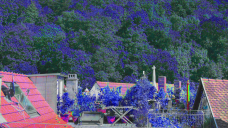
 44M_1600_GRADE.png1920 x 1080 - 4M
44M_1600_GRADE.png1920 x 1080 - 4M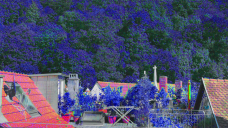
 132M_AQ2_1600_GRADE.png1920 x 1080 - 4M
132M_AQ2_1600_GRADE.png1920 x 1080 - 4M -
-
@proaudio
I can't tell anything about theoretical codec behaviours, I can only hope this test is of any help for you guys. -
in stips 1600 pics there is a lot of difference. Not that I'm all that clear on what you're doing in after effects, but the colors are markedly different. Compare the left side rooftop. the 132 has a whole lot more yellow splotchy areas.
I'm not sure what that means, if there is more color or detail info that ae is trying to differentiate.
They are different, don't know if that means one's better than the other. -
@chauncy
I should have said what effects were done - don't look for the color differences, they won't tell anything, the color differences are only the result of the sun moving. I applied hue&saturation to a great amount as it reveals and creates artifacts quite good - only look for the amount and size of artifacts, not they're color - there's no visible difference to me -
Yeah, if anything that 132Mbps 1600 image looks like it would give you more grief in post, but as you say the artifact size looks identical. As does gradation.
-
@ Ralph_B - "OK guys, I'll test 44M AQ4 today. I'll also try an 88M AQ2, but shouldn't the buffers and other settings be readjusted to handle the larger data flow?"
I've also asked about this, and being digit-unsavey I'm still waiting for greater minds to weigh in.
I like it that people are getting that the death-card only tells part of the story. Details are also only part of the story. All: please also pay attention to what colors/shades are doing that are NOT in focus; great codecs also leave plenty of information in such areas, smooth gradations, etc. -
Also - Where are we at with the cadence thing? Are there any high (or high-ish) bitrate settings that are immune at this point? Has anyone decided the cadence thing just looks bad in streamparser and doesn't matter in the real world?
ALSO - just a thought, but for those of us without the ability to capture HDMI cleanly, what about A/Bing AVCHD against very high 1080 MJPEG. I know the MJPEG starts with less resolution, but might it hold up better than AVCHD and AQ4 with lots of movement? Just a thought, and if given a chance (family...), I'll try to test later today.
AND finally... if this AQ thing turns out to be unresolvable (finding the perfect mix), I wonder about just keeping two bodies around all the time, each tuned for a different thing (66M AQ4 for interviews, 88 AQ2 for b-roll?). -
Don't we need more refined contexts? Static scenes, steady subjects, fast action, etc.
Normally I'd use the fine-tuned 44Mbps GOP12 AQ4 setting. When it's properly focused on a steady subject, the 6Mb I-frame looks solid. The power of AQ4... I guess. So far no other settings had been stabilized at AQ4.
I'd use the fine-tuned 100Mbps GOP3 AQ2 setting for fast action. Not necessarily better IQ. But better motion rendering... I hope. It's hard to test motion rendering comparison though. I tried 66Mbps and 88Mbps GOP3 AQ2. Both showed the cadence issue.
It would be fallacy if we simply say some setting is better than the other one. Context, testing methodology, details, more details... to understand more subtleties. -
Here's a new round of HDMI vs AVCHD testing. Pictures are all lossless.
The contestants -
Chris's 44M AQ4
Chris's 66M AQ2
88M AQ2 based on Chris's 66M.
This time I increased the shutter speed to 1/2000 sec to freeze the action and throw as much information at the encoder as possible.
OBSERVATIONS
All three static pictures are so close to each other, I can't make any definitive statement about them. The 88M might be a teeny weeny closer to the HDMI, but in a blind test, I'm not sure I would pick it out. It's also possible the 44M picture might not have quite as fine noise, but boy, it's subtle.
On to the motion...
44M AQ4
Motion is suprisingly good. There is a very slight loss of detail compared to the HDMI (but not much).
66M AQ2
Very, very good. This is the best motion of the three and comes closest to the HDMI.
88M AQ2
Suprisingly, motion is not as good as 66M AQ2 (look at the little orange flowers). This may be because this setting hasn't been fine tuned. I only changed the data rate of the 66M setting.
First pair of pictures is 44M AQ4 Static.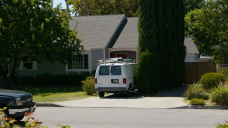
 44 mbps AQ4 1-2000 Static HDMI.png1920 x 1080 - 4M
44 mbps AQ4 1-2000 Static HDMI.png1920 x 1080 - 4M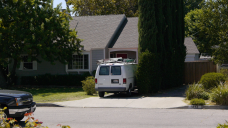
 44 mbps AQ4 1-2000 Static AVCHD.png1920 x 1080 - 3M
44 mbps AQ4 1-2000 Static AVCHD.png1920 x 1080 - 3M -
44M AQ4 Motion
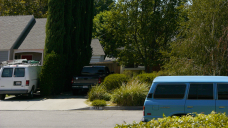
 44 mbps AQ4 1-2000 Motion HDMI.png1920 x 1080 - 4M
44 mbps AQ4 1-2000 Motion HDMI.png1920 x 1080 - 4M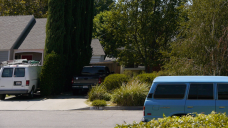
 44 mbps AQ4 1-2000 Motion AVCHD.png1920 x 1080 - 3M
44 mbps AQ4 1-2000 Motion AVCHD.png1920 x 1080 - 3M -
66M AQ2 Static
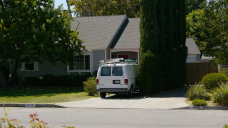
 66 mbps AQ2 1-2000 Static HDMI.png1920 x 1080 - 4M
66 mbps AQ2 1-2000 Static HDMI.png1920 x 1080 - 4M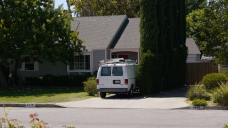
 66 mbps AQ2 1-2000 Static AVCHD.png1920 x 1080 - 3M
66 mbps AQ2 1-2000 Static AVCHD.png1920 x 1080 - 3M
This topic is closed.
← All Discussions Start New Topic


Howdy, Stranger!
It looks like you're new here. If you want to get involved, click one of these buttons!
Categories
- Topics List23,993
- Blog5,725
- General and News1,354
- Hacks and Patches1,153
- ↳ Top Settings33
- ↳ Beginners256
- ↳ Archives402
- ↳ Hacks News and Development56
- Cameras2,368
- ↳ Panasonic995
- ↳ Canon118
- ↳ Sony156
- ↳ Nikon96
- ↳ Pentax and Samsung70
- ↳ Olympus and Fujifilm102
- ↳ Compacts and Camcorders300
- ↳ Smartphones for video97
- ↳ Pro Video Cameras191
- ↳ BlackMagic and other raw cameras116
- Skill1,960
- ↳ Business and distribution66
- ↳ Preparation, scripts and legal38
- ↳ Art149
- ↳ Import, Convert, Exporting291
- ↳ Editors191
- ↳ Effects and stunts115
- ↳ Color grading197
- ↳ Sound and Music280
- ↳ Lighting96
- ↳ Software and storage tips266
- Gear5,420
- ↳ Filters, Adapters, Matte boxes344
- ↳ Lenses1,582
- ↳ Follow focus and gears93
- ↳ Sound499
- ↳ Lighting gear314
- ↳ Camera movement230
- ↳ Gimbals and copters302
- ↳ Rigs and related stuff273
- ↳ Power solutions83
- ↳ Monitors and viewfinders340
- ↳ Tripods and fluid heads139
- ↳ Storage286
- ↳ Computers and studio gear560
- ↳ VR and 3D248
- Showcase1,859
- Marketplace2,834
- Offtopic1,320







